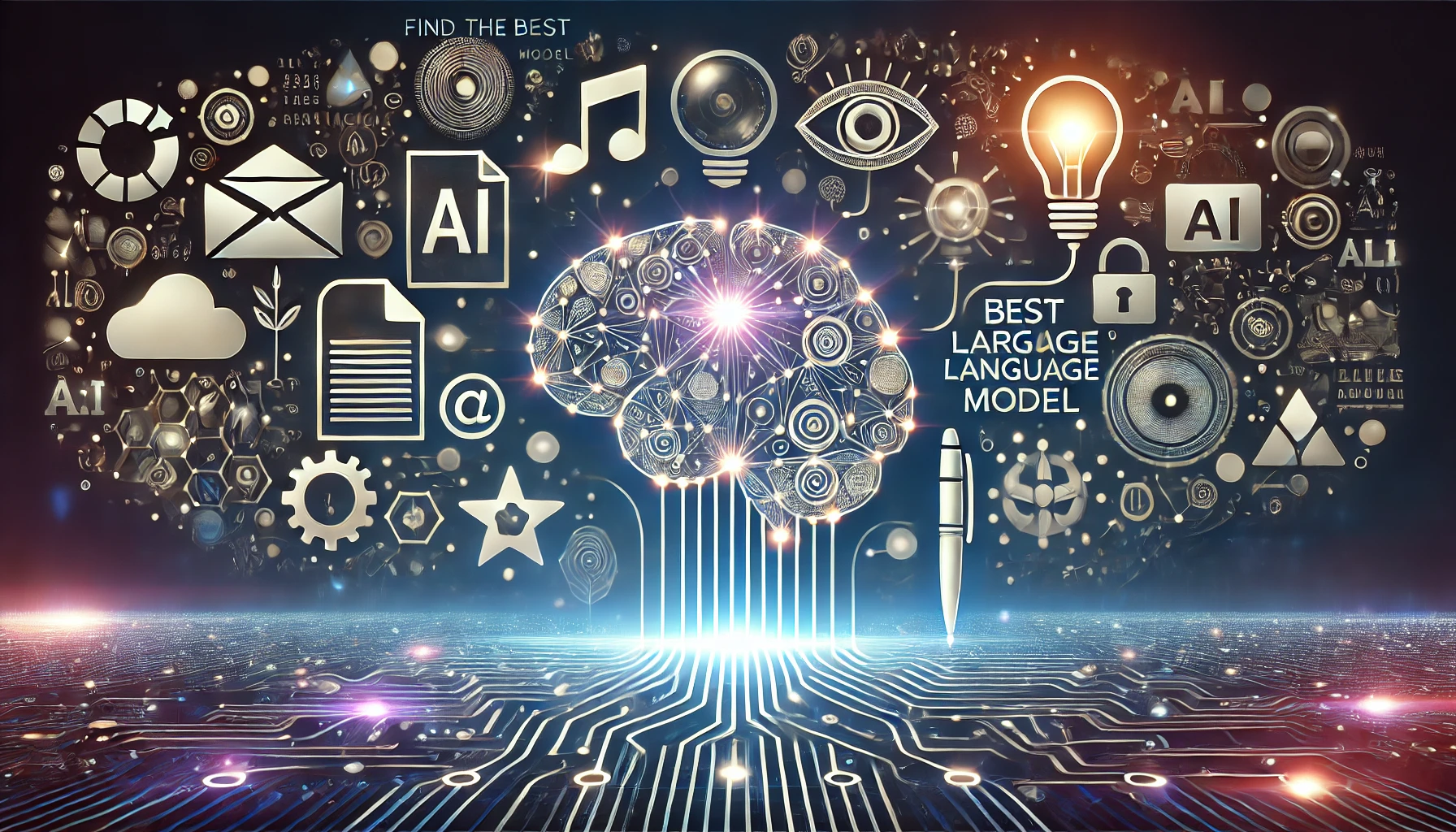
Large language model (LLM)
A Large Language Model (LLM) is a type of AI trained on vast textual data to understand, generate, and manipulate human language. LLMs use deep learning and tra...

Text Generation with Large Language Models (LLMs) refers to the advanced use of machine learning models to produce human-like text from prompts. Explore how LLMs, powered by transformer architectures, are revolutionizing content creation, chatbots, translation, and more.
Text Generation with Large Language Models (LLMs) refers to the sophisticated use of machine learning models to produce human-like text based on input prompts. LLMs are a specialized subset of AI models designed to understand, interpret, and generate human language. These models leverage a specific architecture known as transformers, which allows them to efficiently handle vast amounts of data and generate text that is coherent and contextually relevant.
Large Language Models are advanced deep learning models trained on extensive datasets to predict and generate text. Their architecture typically involves encoders and decoders capable of handling complex linguistic patterns and relationships between words. Transformers, a type of neural network architecture, form the backbone of these models, enabling them to process input sequences in parallel, significantly enhancing their efficiency compared to earlier models like recurrent neural networks (RNNs).
Large language models utilize massive datasets and are characterized by their substantial number of parameters, akin to a knowledge bank that the model builds as it learns. These models are not only capable of language-related tasks but can also be adapted for other complex tasks, such as understanding protein structures or writing software code. They are foundational to numerous NLP applications, including translation, chatbots, and AI assistants.
Text generation is the process of creating new text content by predicting subsequent tokens based on a given input. This can involve completing sentences, writing essays, generating code, or creating dialogue in chatbots. Text generation is a fundamental task for LLMs, allowing them to demonstrate their understanding of language and context.
Transformers use mechanisms such as self-attention to weigh the significance of different words within a sentence. This allows them to capture long-range dependencies in text, making them highly effective for tasks involving language understanding and generation.
The transformer model processes data by tokenizing the input and conducting mathematical operations to discover relationships between tokens. This architecture’s self-attention mechanism enables the model to consider the entire context of a sentence to generate predictions, learning more quickly than traditional models and capturing the semantic and syntactic meaning of input text.
Decoding strategies are critical in text generation as they determine how the model selects the next token during generation. Common strategies include:
Fine-tuning is the process of further training a pre-trained LLM on a specific dataset to adapt it to particular tasks or domains, such as customer service chatbots or medical diagnosis systems. This allows the model to generate more relevant and accurate content for specific applications.
Fine-tuning involves optimizing the model’s performance for specific tasks, enhancing its ability to generate appropriate outputs in various contexts. This process often requires the use of techniques such as few-shot or zero-shot prompting to instruct the model on task-specific activities.
Autoregressive models generate text by predicting one token at a time and using each generated token as part of the input for the next prediction. This iterative process continues until the model reaches a predefined stopping point or generates an end-of-sequence token.
LLMs are extensively used in chatbots to generate human-like responses in real-time, enhancing user interaction and providing personalized customer service.
LLMs assist in generating content for blogs, articles, and marketing copy, saving time and effort for content creators while ensuring stylistic consistency and coherence.
LLMs can translate text between languages and summarize large documents into concise versions, aiding in cross-language communication and information processing.
Models like OpenAI’s Codex can generate programming code based on natural language prompts, assisting developers in automating repetitive coding tasks.
LLMs are used to create poetry, stories, and other forms of creative writing, providing inspiration and assistance to writers.
Ensuring that LLMs generate text that adheres to specific safety and ethical guidelines is crucial, especially in applications like news generation or customer support, where incorrect or inappropriate content can have significant repercussions.
LLMs can inadvertently learn and propagate biases present in their training data. Addressing these biases requires careful dataset curation and algorithmic adjustments.
While LLMs are powerful, they have limitations in terms of the context they can handle. Ensuring that models maintain the context over long documents or conversations remains a computational challenge.
Training and deploying LLMs require substantial computational resources, which can be a barrier for smaller organizations.
With ongoing advancements, LLMs are expected to become more efficient and capable, with improved accuracy and reduced biases. Researchers are exploring ways to enhance LLMs’ ability to understand and generate text by integrating multimodal data (text, image, audio) and improving their interpretability and scalability. As these models evolve, they will continue to transform how humans interact with machines and process information across various domains.
By leveraging the capabilities of LLMs, industries can innovate and enhance their services, making significant strides in automation, content creation, and human-machine interaction.
Research on Text Generation with Large Language Models
Text Generation with Large Language Models (LLMs) is a rapidly evolving field within natural language processing bridges human-computer interaction. Discover its key aspects, workings, and applications today!") that focuses on generating coherent and contextually relevant text using advanced AI models. Here, we highlight some significant research contributions in this domain:
Planning with Logical Graph-based Language Model for Instruction Generation (Published: 2024-07-05) – This paper by Fan Zhang et al. explores the challenges of generating logically coherent texts with LLMs. The authors introduce Logical-GLM, a novel graph-based language model that integrates logical reasoning into text generation. By constructing logical Bayes graphs from natural language instructions and using them to guide model training, the approach enhances the logical validity and interpretability of generated texts. The research demonstrates that Logical-GLM can produce instructional texts that are both logically sound and efficient, even with limited training data. Read more.
Scaling Back-Translation with Domain Text Generation for Sign Language Gloss Translation (Published: 2023-02-07) – In this study, Jinhui Ye and colleagues address the data scarcity in sign language gloss translation by introducing a Prompt-based domain text Generation (PGEN) approach. PGEN uses pre-trained language models like GPT-2 to generate large-scale in-domain spoken language texts, which enhances the back-translation process. The results show significant improvements in translation quality, demonstrating the effectiveness of generated texts in overcoming data limitations. Read more.
Paraphrasing with Large Language Models (Published: 2019-11-21) – Sam Witteveen and Martin Andrews present a technique for using LLMs such as GPT-2 for paraphrasing tasks. Their approach allows for generating high-quality paraphrases across various text lengths, including sentences and paragraphs, without splitting the text into smaller units. This research highlights the adaptability of LLMs in refining and rephrasing content, showcasing their utility in diverse language tasks. Read more.
Large Language Model Enhanced Text-to-SQL Generation: A Survey (Published: 2024-10-08) – Xiaohu Zhu and colleagues survey the use of LLMs in translating natural language queries into SQL commands. This capability enables users to interact with databases through natural language, simplifying complex data retrieval tasks. The paper reviews advancements in enhancing text-to-SQL generation using LLMs, emphasizing their potential to revolutionize database interaction methods. Read more.
Text generation with Large Language Models (LLMs) involves using advanced machine learning models to produce human-like text from prompts. These models, leveraging transformer architectures, understand, interpret, and generate coherent language for various applications.
Text generation is used in chatbots, virtual assistants, content creation for blogs and marketing, translation, summarization, code generation, and creative writing.
Challenges include controlling model outputs for safety and ethics, mitigating biases from training data, managing context limitations, and handling high computational resource requirements.
Transformers use self-attention mechanisms to capture relationships between words, enabling efficient processing of large datasets and generating contextually relevant, coherent text.
Fine-tuning involves further training a pre-trained LLM on a specific dataset or task, allowing it to generate more relevant and accurate content for specialized applications.
Smart Chatbots and AI tools under one roof. Connect intuitive blocks to turn your ideas into automated Flows.
A Large Language Model (LLM) is a type of AI trained on vast textual data to understand, generate, and manipulate human language. LLMs use deep learning and tra...
We've tested and ranked the writing capabilities of 5 popular models available in FlowHunt to find the best LLM for content writing.
Discover the essential GPU requirements for Large Language Models (LLMs), including training vs inference needs, hardware specifications, and choosing the right...
Cookie Consent
We use cookies to enhance your browsing experience and analyze our traffic. See our privacy policy.

